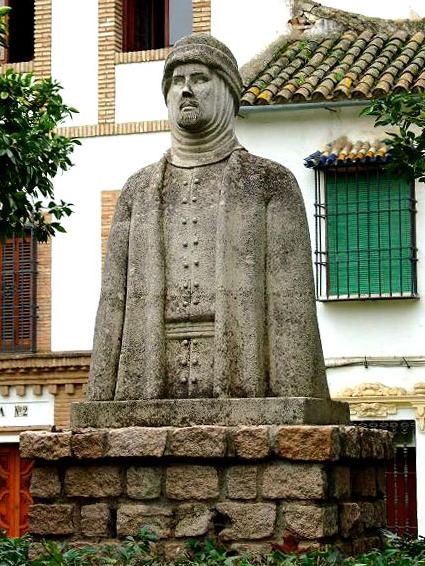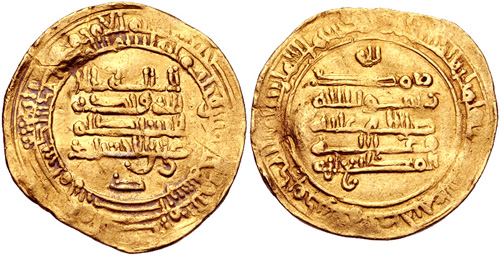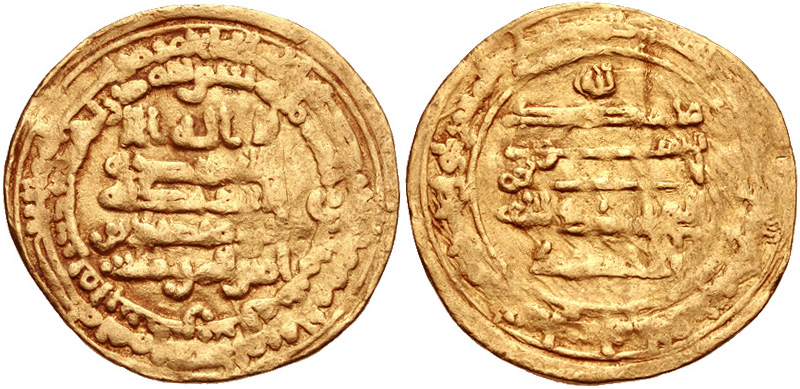|
Unujur Ibn Al-Ikhshid
Abu'l-Qasim Unujur ibn al-Ikhshid ( ar, أبو القاسم أنوجور بن الإخشيد) was the second ruler of the Ikhshidid dynasty, which ruled Egypt, Syria and the Hejaz under the suzerainty of the Abbasid Caliphate but ''de facto'' autonomous. Unujur ruled from 946 to 960, but much of the actual power was held by the black eunuch Abu'l-Misk Kafur. Unujur died in 960 CE, and was buried in Jerusalem next to his father, at a location close to the Gate of the Tribes on the Temple Mount The Temple Mount ( hbo, הַר הַבַּיִת, translit=Har haBayīt, label=Hebrew, lit=Mount of the House f the Holy}), also known as al-Ḥaram al-Sharīf (Arabic: الحرم الشريف, lit. 'The Noble Sanctuary'), al-Aqsa Mosque compoun .... References Sources * 961 deaths Year of birth unknown Ikhshidids 10th-century rulers in Africa 10th-century rulers in Asia Ikhshidid emirs {{Asia-royal-stub ... [...More Info...] [...Related Items...] OR: [Wikipedia] [Google] [Baidu] |
Dinar Of Abu'l-Qasim Unujur, AH 337
The dinar () is the principal currency unit in several countries near the Mediterranean Sea, and its historical use is even more widespread. The modern dinar's historical antecedents are the gold dinar and the silver dirham, the main coin of the medieval Islamic empires, first issued in AH 77 (696–697 CE) by Caliph Abd al-Malik ibn Marwan. The word "dinar" derives from the Latin " ''dēnārius''," a silver coin of ancient Rome, which was first minted about c.211 BCE. The English word "dinar" is the transliteration of the Arabic دينار (''dīnār''), which was borrowed via the Syriac ''dīnarā'', itself from the Latin ''dēnārius''. The Kushan Empire introduced a gold coin known as the ''dīnāra'' into India in the 1st century AD; the Gupta Empire and its successors up to the 6th century adopted the coin. The modern gold dinar is a projected bullion gold coin, not issued as official currency by any state. Legal tender Countries currently using ... [...More Info...] [...Related Items...] OR: [Wikipedia] [Google] [Baidu] |
Ikhshidid
The Ikhshidid dynasty (, ) was a Turkic mamluk dynasty who ruled Egypt and the Levant from 935 to 969. Muhammad ibn Tughj al-Ikhshid, a Turkic mamluk soldier, was appointed governor by the Abbasid Caliph al-Radi. The dynasty carried the Arabic title "Wāli" reflecting their position as governors on behalf of the Abbasids. The Ikhshidids came to an end when the Fatimid army conquered Fustat in 969. The Ikhshidid family tomb was in Jerusalem.Max Van BerchemMIFAO 44 - Matériaux pour un Corpus Inscriptionum Arabicarum Part 2 Syrie du Sud T.2 Jérusalem Haram (1927) p13-14 (no.146): “L’émir Muhammad mourut à Damas en 334 (946) et son corps fut transporté et inhumé à Jérusalem. L’émir Unūdjūr mourut en 349 (960) et son corps fut porté à Jérusalem et inhumé à côté de celui de son père. L’émir ‘Ali mourut en 355 (966) et son corps fut transporté à Jérusalem et inhumé à côté de ceux de son père et de son frère. Enfin l'ustādh Kāfūr mourut en 357 (96 ... [...More Info...] [...Related Items...] OR: [Wikipedia] [Google] [Baidu] |
10th-century Rulers In Africa
1 (one, unit, unity) is a number representing a single or the only entity. 1 is also a numerical digit and represents a single unit of counting or measurement. For example, a line segment of ''unit length'' is a line segment of length 1. In conventions of sign where zero is considered neither positive nor negative, 1 is the first and smallest positive integer. It is also sometimes considered the first of the infinite sequence of natural numbers, followed by 2, although by other definitions 1 is the second natural number, following 0. The fundamental mathematical property of 1 is to be a multiplicative identity, meaning that any number multiplied by 1 equals the same number. Most if not all properties of 1 can be deduced from this. In advanced mathematics, a multiplicative identity is often denoted 1, even if it is not a number. 1 is by convention not considered a prime number; this was not universally accepted until the mid-20th century. Additionally, 1 is the s ... [...More Info...] [...Related Items...] OR: [Wikipedia] [Google] [Baidu] |
Ikhshidids
The Ikhshidid dynasty (, ) was a Turkic mamluk dynasty who ruled Egypt and the Levant from 935 to 969. Muhammad ibn Tughj al-Ikhshid, a Turkic mamluk soldier, was appointed governor by the Abbasid Caliph al-Radi. The dynasty carried the Arabic title "Wāli" reflecting their position as governors on behalf of the Abbasids. The Ikhshidids came to an end when the Fatimid army conquered Fustat in 969. The Ikhshidid family tomb was in Jerusalem.Max Van BerchemMIFAO 44 - Matériaux pour un Corpus Inscriptionum Arabicarum Part 2 Syrie du Sud T.2 Jérusalem Haram (1927) p13-14 (no.146): “L’émir Muhammad mourut à Damas en 334 (946) et son corps fut transporté et inhumé à Jérusalem. L’émir Unūdjūr mourut en 349 (960) et son corps fut porté à Jérusalem et inhumé à côté de celui de son père. L’émir ‘Ali mourut en 355 (966) et son corps fut transporté à Jérusalem et inhumé à côté de ceux de son père et de son frère. Enfin l'ustādh Kāfūr mourut en 357 (96 ... [...More Info...] [...Related Items...] OR: [Wikipedia] [Google] [Baidu] |
Year Of Birth Unknown
A year or annus is the orbital period of a planetary body, for example, the Earth, moving in its orbit around the Sun. Due to the Earth's axial tilt, the course of a year sees the passing of the seasons, marked by change in weather, the hours of daylight, and, consequently, vegetation and soil fertility. In temperate and subpolar regions around the planet, four seasons are generally recognized: spring, summer, autumn and winter. In tropical and subtropical regions, several geographical sectors do not present defined seasons; but in the seasonal tropics, the annual wet and dry seasons are recognized and tracked. A calendar year is an approximation of the number of days of the Earth's orbital period, as counted in a given calendar. The Gregorian calendar, or modern calendar, presents its calendar year to be either a common year of 365 days or a leap year of 366 days, as do the Julian calendars. For the Gregorian calendar, the average length of the calendar year ( ... [...More Info...] [...Related Items...] OR: [Wikipedia] [Google] [Baidu] |
961 Deaths
Year 961 ( CMLXI) was a common year starting on Tuesday (link will display the full calendar) of the Julian calendar. Events By place Byzantine Empire * March 6 – Siege of Chandax: Byzantine forces under Nikephoros II Phokas capture and pillage Chandax after an 8-month siege. Nikephoros massacres the population without mercy and carries them off into slavery, returning to Constantinople with Emir Abd al-Aziz ibn Shu'ayb and his family as prisoners. The island Emirate of Crete is converted into a Byzantine theme and the remaining Muslims are converted to Christianity. Europe * May 26 – Otto I, Holy Roman Emperor elects his 6-year-old son Otto II as heir apparent and co-ruler at the Imperial Diet in Worms. He is crowned at Aachen, and placed under the tutelage of his grandmother Matilda and his half-brother William of Mainz. Otto's own brother Bruno I is charged with the provisional government of Lorraine again. * Summer – Otto I leads an expedit ... [...More Info...] [...Related Items...] OR: [Wikipedia] [Google] [Baidu] |
Abu'l-Hasan Ali Ibn Al-Ikhshid
Abu'l-Hasan Ali ibn al-Ikhshid ( ar, أبو الحسن علي بن الإخشيد) was the third ruler of the autonomous Ikhshidid dynasty, which ruled Egypt, Syria and the Hejaz for the Abbasid Caliphate. He reigned for six years, between 960-966 CE. He was a younger son of the dynasty's founder, Muhammad ibn Tughj al-Ikhshid, and reigned from the death of his elder brother Unujur in 961. Actual power throughout his reign was held by the capable black eunuch Abu'l-Misk Kafur. The main events of his reign were a Nubian invasion in 963, as well as a resurgence of Bedouin unrest and raids both in the Western Desert and in the Syrian Desert, in the latter case accompanied by the reappearance of the Qarmatians. Anti-Christian riots were provoked by a defeat of the Ikhshidid fleet against the Byzantine navy in 960/963, as well as the Byzantine offensives under Nikephoros Phokas in Cilicia and northern Syria. Ali died in January 966, and was buried in Jerusalem next to his father and b ... [...More Info...] [...Related Items...] OR: [Wikipedia] [Google] [Baidu] |
List Of Governors Of Islamic Egypt
Governors of Arab Egypt (640–1250) and Mamluk Egypt (1250–1517). For other periods, see the list of rulers of Egypt. Rashidun Caliphate (640–658) Umayyad Caliphate (659–750) Dates taken from John Stewart's ''African States and Rulers'' (2005). Abbasid Caliphate (750–969) Governors during the first Abbasid period (750–868) Dates taken from John Stewart's ''African States and Rulers'' (2005). Autonomous emirs of the Tulunid dynasty (868–905) Dates taken from John Stewart's ''African States and Rulers'' (2005). Governors during the second Abbasid period (905–935) Dates taken from John Stewart's ''African States and Rulers'' (2005). Autonomous emirs of the Ikhshidid dynasty (935–969) Dates taken from John Stewart's ''African States and Rulers'' (2005). Fatimid Dynasty (969–1171) Dates for Caliphs taken from John Stewart's ''African States and Rulers'' (2005). Ayyubid Sultanate (1171–1252) Dates taken from John Stewart's ''African States an ... [...More Info...] [...Related Items...] OR: [Wikipedia] [Google] [Baidu] |
Muhammad Ibn Tughj Al-Ikhshid
Abū Bakr Muḥammad ibn Ṭughj ibn Juff ibn Yiltakīn ibn Fūrān ibn Fūrī ibn Khāqān (8 February 882 – 24 July 946), better known by the title al-Ikhshīd ( ar, الإخشيد) after 939, was an Abbasid commander and governor who became the autonomous ruler of Egypt and parts of Syria (Levant) from 935 until his death in 946. He was the founder of the Ikhshidid dynasty, which ruled the region until the Fatimid conquest of 969. The son of Tughj ibn Juff, a general of Turkic origin who served both the Abbasids and the autonomous Tulunid rulers of Egypt and Syria, Muhammad ibn Tughj was born in Baghdad but grew up in Syria and acquired his first military and administrative experiences at his father's side. He had a turbulent early career: he was imprisoned along with his father by the Abbasids in 905, was released in 906, participated in the murder of the vizier al-Abbas ibn al-Hasan al-Jarjara'i in 908, and fled Iraq to enter the service of the governor of Egypt, Takin ... [...More Info...] [...Related Items...] OR: [Wikipedia] [Google] [Baidu] |
Ikhshidid Dynasty
The Ikhshidid dynasty (, ) was a Turkic mamluk dynasty who ruled Egypt and the Levant from 935 to 969. Muhammad ibn Tughj al-Ikhshid, a Turkic mamluk soldier, was appointed governor by the Abbasid Caliph al-Radi. The dynasty carried the Arabic title " Wāli" reflecting their position as governors on behalf of the Abbasids. The Ikhshidids came to an end when the Fatimid army conquered Fustat in 969. The Ikhshidid family tomb was in Jerusalem.Max Van BerchemMIFAO 44 - Matériaux pour un Corpus Inscriptionum Arabicarum Part 2 Syrie du Sud T.2 Jérusalem Haram (1927) p13-14 (no.146): “L’émir Muhammad mourut à Damas en 334 (946) et son corps fut transporté et inhumé à Jérusalem. L’émir Unūdjūr mourut en 349 (960) et son corps fut porté à Jérusalem et inhumé à côté de celui de son père. L’émir ‘Ali mourut en 355 (966) et son corps fut transporté à Jérusalem et inhumé à côté de ceux de son père et de son frère. Enfin l'ustādh Kāfūr mourut en 357 ( ... [...More Info...] [...Related Items...] OR: [Wikipedia] [Google] [Baidu] |
Temple Mount
The Temple Mount ( hbo, הַר הַבַּיִת, translit=Har haBayīt, label=Hebrew, lit=Mount of the House f the Holy}), also known as al-Ḥaram al-Sharīf (Arabic: الحرم الشريف, lit. 'The Noble Sanctuary'), al-Aqsa Mosque compound, or simply al-Aqsa Mosque (, ''al-Masjid al-Aqṣā'', lit. 'The Furthest Mosque'), * ''Where Heaven and Earth Meet'', page 13: "Nowadays, while oral usage of the term Haram persists, Palestinians tend to use in formal texts the name Masjid al-Aqsa, habitually rendered into English as 'the Aqsa Mosque'" * * * * PEF Survey of Palestine, 1883, volume III Jerusalem, p.119: "The Jamia el Aksa, or 'distant mosque' (that is, distant from Mecca), is on the south, reaching to the outer wall. The whole enclosure of the Haram is called by Moslem writers Masjid el Aksa, 'praying-place of the Aksa,' from this mosque." * Yitzhak Reiter: "This article deals with the employment of religious symbols for national identities and national narratives by us ... [...More Info...] [...Related Items...] OR: [Wikipedia] [Google] [Baidu] |
Jerusalem
Jerusalem (; he, יְרוּשָׁלַיִם ; ar, القُدس ) (combining the Biblical and common usage Arabic names); grc, Ἱερουσαλήμ/Ἰεροσόλυμα, Hierousalḗm/Hierosóluma; hy, Երուսաղեմ, Erusałēm. is a city in Western Asia. Situated on a plateau in the Judaean Mountains between the Mediterranean Sea, Mediterranean and the Dead Sea, it is one of the List of oldest continuously inhabited cities, oldest cities in the world and is considered to be a holy city for the three major Abrahamic religions: Judaism, Christianity, and Islam. Both Israelis and Palestinians claim Jerusalem as their Capital city, capital, as Israel maintains its primary governmental institutions there and the State of Palestine ultimately foresees it as its seat of power. Because of this dispute, Status of Jerusalem, neither claim is widely recognized internationally. Throughout History of Jerusalem, its long history, Jerusalem has been destroyed at least twice, Sie ... [...More Info...] [...Related Items...] OR: [Wikipedia] [Google] [Baidu] |







.jpg)
